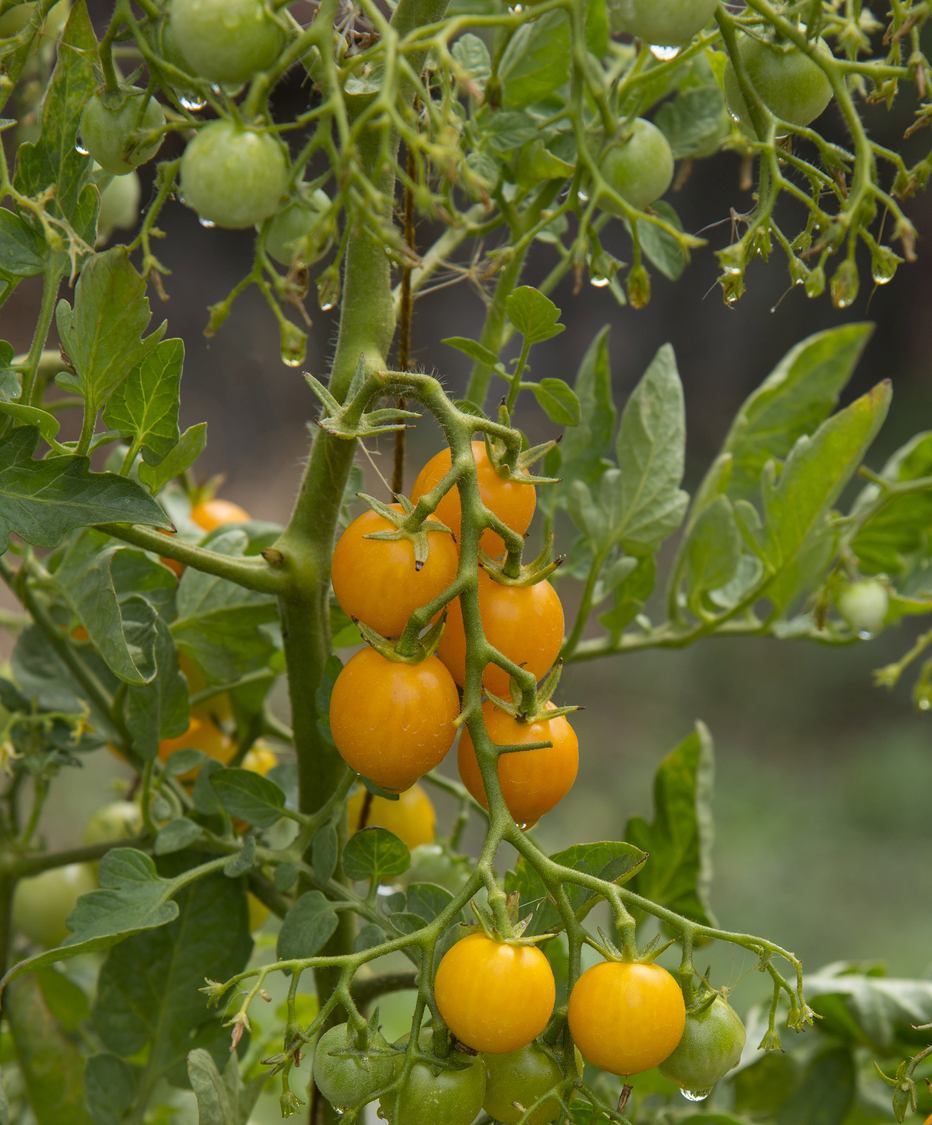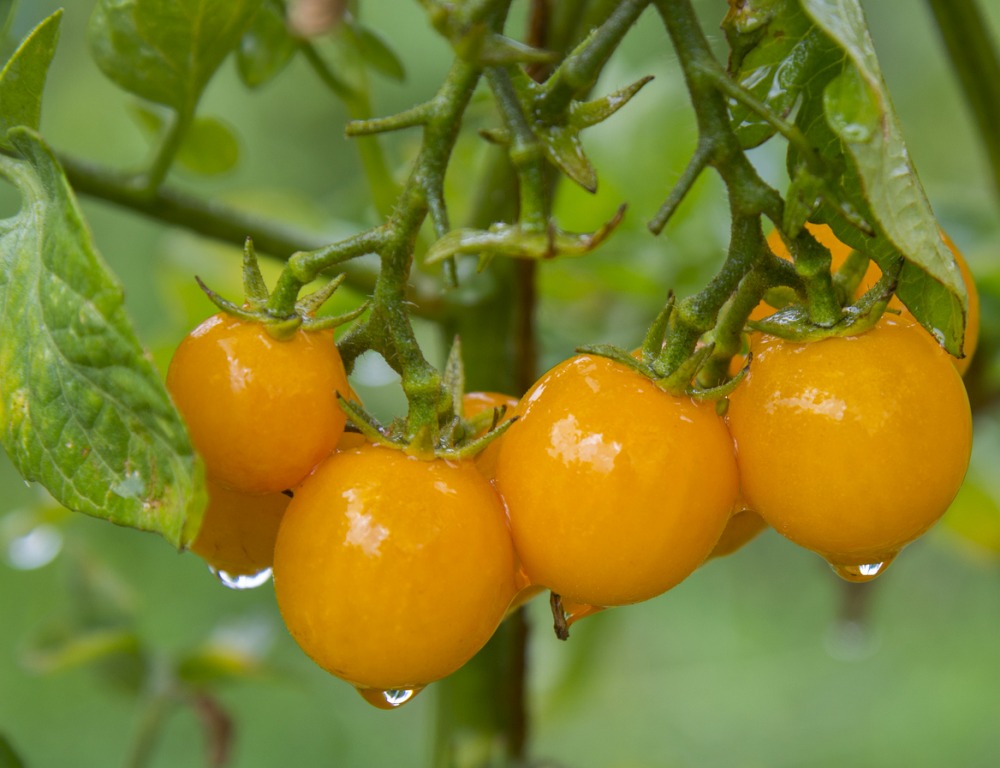Yellow Tomato Leaves – Why Tomato Leaves Turn Yellow
Every living plant leaf is bound to wilt and die. That’s just the law of nature. And it’s natural for your tomato leaves to turn yellow and die too. What’s not normal, however, is if all the leaves, or at least most of them suddenly turn yellow. Yellow tomato leaves are a common symptom of underlying diseases. Some are man-made due to bad soil or overwatering, while others are caused by pests and infections.
This article walks you through all the problems that cause tomato yellow leaves, what you can do about them, and how to solve the issue and prevent it from happening again.
Fusarium Root Rot Causes Yellow Tomato Leaves
Some plants can handle water or the lack of it well. These are hardy plants that will survive and even thrive in various conditions from waterlogged soil to drought. Others need the moisture in the soil just right, otherwise, things go haywire. Tomato plants are one of those plants that are a little too finicky about water.
To give you an idea of what ideal water conditions the tomatoes require, the soil needs to be neither wet nor dry. Somewhere in between is good. If the soil is wet, the roots of the tomato rot quickly. If you water it before the topsoil goes dry, you get the same problem. The roots are quite sensitive to the lack of oxygen in the soil. When they’re flooded with water, the oxygen deprivation leads to root degradation and fusarium root rot. As a result, the leaves turn yellow out of lack of nutrition.
You can tell that your plant is suffering from root rot if you notice the following.
- The bottom leaves of the plant are turning yellow.
- The base of the stem is brown and mushy, especially near the ground.
- The first few inches of the stem below the topsoil are also brown and soft.
The problem with root rot is that by the time you notice the yellow leaves and brown stem, it would be too late to do anything about it. It takes some time from the moment the roots start to rot until the leaves become yellow. So when root rot sets in, it usually means the tomato plant will die.
Compact Soil
Since the soil and water are very much the two most important components of the tomato plant’s life cycle, you need to look at the soil when the tomato leaves turn yellow. Most plants prefer well-drained soil where the water doesn’t get trapped in a badly-aerated soil. For tomatoes, the issue of loose soil that allows air and doesn’t retain water is crucial for its success and survival.
When the leaves turn yellow, first check the base of the stem for the brown marks that imply waterlogging. If you don’t find those signs, then you have a problem with the soil not with overwatering. How you salvage your plants depends on whether they grow in the garden or in pots. Plants growing in the garden are hard to save since it will involve turning up the soil and mixing some sand or perlite to loosen it. But this process takes time and the plants won’t survive.
If you grow your tomato plants in pots and you have a problem with poorly aerated soil, you can use new pots and add the right potting mix. Make sure the soil is loose, well-drained, and has plenty of organic materials in it. Remove the tomato plants out of the old pot and check the root system. Clip away any rotten or damaged roots, then plant it in the new soil and water it.
Septoria Leaf Spot
Apart from the soil and water, other agents might cause your tomato leaves to turn yellow. One of those is a very aggressive fungus called Septoria lycopersici. When it attacks your tomato plants, it leaves you a damaged plant where nothing is safe, neither the leaves, stems, nor fruits. But it’s the tomato’s foliage that bears the brunt of the ferocious attack.
Despite this onslaught, the fungus usually is related to weather conditions rather than the soil. In areas where humidity levels are high or it rains a lot, it’s common to see tomato plants getting infected with this fungus. While that’s good news since it means the soil is not affected, it also means there’s not much you can do about protecting your tomato plants against its infection.
The Septoria lycopersici fungus can withstand cold temperatures and will go through the winter hanging on weeds and sticking to other plants such as peppers. This might explain how your tomato plants get the fungus. If you use contaminated gardening tools, they might spread to the tomatoes and infect them. These are the signs you have a fungal infection.
- Tiny yellow spots appear on the leaves. They’re usually too small for you to notice unless you get a closer look at the leaves.
- On close inspection, you’ll notice that the spots have dark brown edges.
- As the infection spreads, the spots will join together and form large regions of yellow on the leaf.
- The first leaves to be infected are the ones at the base and the disease spreads upwards.
- If left untreated, the leaves will wither and die which will affect the plant and the fruits as well.
To get rid of the fungal infestation, make sure to remove all infected leaves and dispose of them safely. Usually, you should burn the leaves to prevent the spread of the disease. When you water your tomatoes, aim for the base of the plant, not the leaves to keep humidity levels at the bare minimum. Also, make sure to get rid of any weeds or members of the nightshade family. They act as hosts for the fungus during the winter months.
Fusarium Wilt
Another disease that causes the tomato leaves to turn yellow is fusarium wilt. It’s caused by Fusarium oxysporum, a pathogen that usually grows in the soil. This is actually what makes this fungus so dangerous. Unlike Septoria lycopersici which grows on other plants and relishes humidity, this fungus lies in waiting in the soil and affects the roots of the tomato plant.
This makes it hard to detect. While the symptoms of the disease are similar to those of other water and soil-related ones, most of the time you won’t be able to know that it’s a fungus in the soil making all these problems. You change the soil, ensure the soil is adequately moist, yet the plant continues to wilt.
To protect your plant against the onslaught of this very aggressive fungus, you need to change the pH of the soil. Usually when you bring it down to 6.5 which is how the tomato plants like it but the fungus cannot survive in it. Also, make sure the roots are in good condition. The fungus can only find a way into the plant’s root system through damaged roots.
If you have more than one tomato plant in your garden and one of them gets infected with fusarium wilt, you should uproot it and burn it to prevent the spread of the fungus to other plants.
Nutrition Deficiency and Yellow Tomato Leaves
Barring all of the above causes of yellow tomato leaf disease, you need to turn your attention to the nutrition the plant is getting. In many cases, the leaves are turning yellow because they’re not getting enough nutrition. There are many reasons why your plant is not getting enough nutrition from the soil.
- Under-Watering: When the soil gets dry, the roots cannot absorb the nutrition it needs for the survival and growth of the plant. Water dissolves these nutrients and makes it easy to be absorbed. Considering how delicate the roots of the tomato plant are, you need to make sure the soil is adequately moist.
- Nitrogen Deficiency: This problem is also related to the nutrition-deficiency issue above. Nitrogen is important for the growth of the leaves. When the plant is not getting enough nitrogen, the lower leaves turn yellow while the top ones remain brightly green. That should be your cue to the problem. Add a nitrogen-rich fertilizer to the soil and water the tomatoes to solve this issue.
- No Magnesium: Another problem that leads to yellow leaves. However, the yellowing here affects the outer edges of the leaves more than the other parts. This is a good indication to help you determine that it’s the lack of magnesium, not nitrogen, or a pathogen that’s causing the problem. Use epsom salt to enrich the soil with magnesium.
- Zinc Deficiency: When your tomato plants are having zinc deficiency, the areas around the veins in the leaf turn yellow while the rest of the leaf remains green and healthy-looking. It affects the new and small leaves more than the old ones.
- High pH: Well-balanced soil is essential for the growth and success of the tomato plants. High pH means the soil is more alkaline. This encourages fungus to grow and attack the roots. Over-fertilizing always leads to this problem. Test your soil and make sure the pH is around 6.5 for optimum tomato growth and prevent the yellow tomato leaves syndrome.


